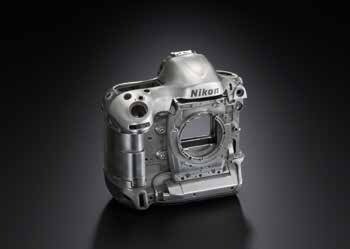articles/Review/flagship-page3
Hoist the Ensign - The Flagships Engage in Battle - part 3 of 1 2 3 4 5
by Mike McNamee Published 01/08/2014

A 75% image crop from the D4s . JPEG processing will have smothered any peformance differences between say a Canon 1Dx and Ian Cook's D4s © CameraSport
The AF system would appear complex to anyone who had not previously handled a Canon camera but it is simple to use once you realise there are six preset versions of AF to choose from. Each of these is recognised by an Olympic athlete icon and the info button can be depressed to show the type of subject best suited to each setting. The info button is available for most controls that require interpretation - very handy so you do not have to carry the handbook with you.
The AF system has much in common with the Canon 5D Mk111, as I understand it the principal difference is that the 1DX has a larger more powerful battery and it makes the AF system quicker. In my hands I did not find the 5D Mk111 a whole lot better than the 7D - many people will disagree with this observation but I repeat, in my hands, using the camera in my locality, photographing my kind of subjects, I did not notice a big improvement of the 5D Mk111 over the 7D.

The 1DX, however, is a different kettle of fish. You might expect me to say that after shelling out the best part of £5,000 but it is true! The system is very quick and for me, more importantly, very decisive; by that I mean it very quickly acquires focus without continual hunting.
Every time I take the camera out I am blown away with its AF capabilities, this includes times when a TC is added to the main lens. I think you will find, wherever you read a critical appraisal of the 1DX, the comments regarding the AF system will be equally positive.
NOTE: The AF system is so sophisticated that it even carries its own setting guidebook, which is a mere 54 pages in length. Ed.
The image files produced are, as might be expected, very clean and show superb detail. The full frame chip opens up a whole new world to anyone who has only ever used a 'crop sensor' camera. The obvious advantage here is that if the light is a little low you just turn up the ISO setting, in fact it goes to what are, for me, unimaginatively high settings. This translates to a whole new ball game, for example, when taking macro shots of insects, previously I would always recommend using a monopod or tripod, I still do but having said that it is possible to get excellent images hand-holding the 1DX, in other words there is less to carry. I also have no reservations whatever in hand-holding the camera with a 500mm and 1.4TC attached. In many cases I find ISO 800 a good starting point, in fact it is my new routine ISO and if I need 1600 or 2000 or 3200 then it is no problem.
Please Note:
There is more than one page for this Article.
You are currently on page 3
- Hoist the Ensign - The Flagships Engage in Battle page 1
- Hoist the Ensign - The Flagships Engage in Battle page 2
- Hoist the Ensign - The Flagships Engage in Battle page 3
- Hoist the Ensign - The Flagships Engage in Battle page 4
- Hoist the Ensign - The Flagships Engage in Battle page 5
1st Published 01/08/2014
last update 18/07/2022 16:35:43
More Review Articles
There are 25 days to get ready for The Society of Photographers Convention and Trade Show at The Novotel London West, Hammersmith ...
which starts on Wednesday 14th January 2026








